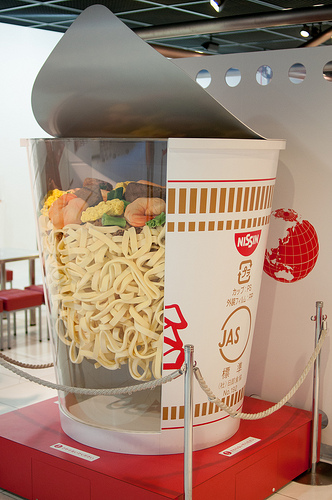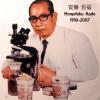The Legacy Of Momofuku Ando: The One Who Brought Japanese Noodles To The World

A simple bowl of noodles in broth… While it’s true that this modest staple of Japanese life may have started out with humble beginnings, Ramen, instant ramen to be exact, can now be found in pantries across the globe. How did Japanese noodles come to be so ubiquitous? For those seriously interested in Japanese food, this is a brief history of the meteoric rise of instant noodles.
Like many elements of Japanese culture, Ramen noodles originated in China, and found their way to Japan. Ramen noodles as we know them today, are quite different and over the decades have developed a distinct Japanese identity. Prior to the war, Ramen noodles were largely unknown outside of Japan. In post-war Japan, the situation was not good and people struggled to feed themselves. One man was determined to change that.
“Peace will come to the world when the people have enough to eat.”
- Momofuku Ando, Founder of Instant Ramen
Drawing on his entrepreneurial senses, Momofuku Ando saw an opportunity to fuel his creativity while addressing the food shortage in post-war Japan. At the time, the Japanese Ministry of Health concluded that it was economically and commercially more viable to sustain the population with bread. The Japanese economy was in such a depressed state that the government wasn’t confident in the small noodles companies to meet the demands of the nation. The Ministry rationalized their proposition with the abundance of wheat flour, which was being supplied by the United States. Momofuku Ando was opposed to the idea of introducing a foreign food as a staple, and began work on what the world now knows as Instant Ramen.
After long periods of trial and error, Ando’s breakthrough came when he discovered how to essentially stop the cooking process of the noodles while simultaneously trapping intense flavor. How did he do this? He deep-fried them! The result was a noodle that readily absorbed liquids when they were “re-heated” with hot water. In 1958, Chicken Ramen was introduced. Ando chose chicken as the base flavor since poultry, unlike beef or pork, wasn’t culturally or religiously sensitive, and therefore appealed to a wider audience.
What’s ironic about Instant Ramen during this time was the price. It was expensive - costing six times more than a “real” bowl of ramen! Today, a package of Instant Ramen costs only a third of a bowl of ramen in Japan.
The second breakthrough for Instant Ramen came from cultural observations Ando made. Instant noodles were meant to be “cooked” in a pot, but Momofuku noticed that his North American customers broke the noodles up, poured hot water over them, and ate their ramen with forks. Catering to this cultural difference, the Cup Noodle was invented in 1971 and has been a hit ever since.
The versatility of this simple product is incredible. Whether re-purposing the product with culinary creativity, slurping it beside the campfire, instant noodles have become an iconic food. Cheap and tasty, instant noodles appeal to everyone from poor college students to Japanese astronaut Soichi Noguchi, who enjoyed Instant Ramen noodles aboard the space shuttle Discovery in 2005!
Are Instant Ramen similar to the real thing? Absolutely not. But if you’re having a craving, reach into your cupboard, bust open a bag, and within 5 minutes, you’ll satisfy your craving.
Itadakimasu!
Interesting facts:
- Momofuku means “Lucky Peach”
- Mr. Ando is not Japanese. He was born in Taiwan.






